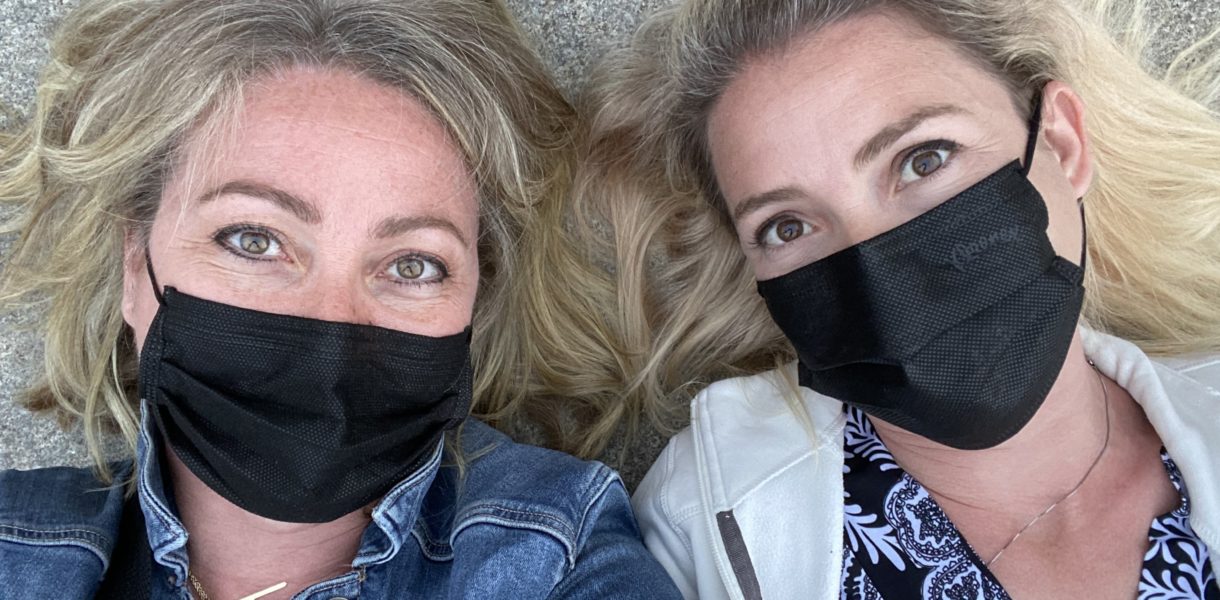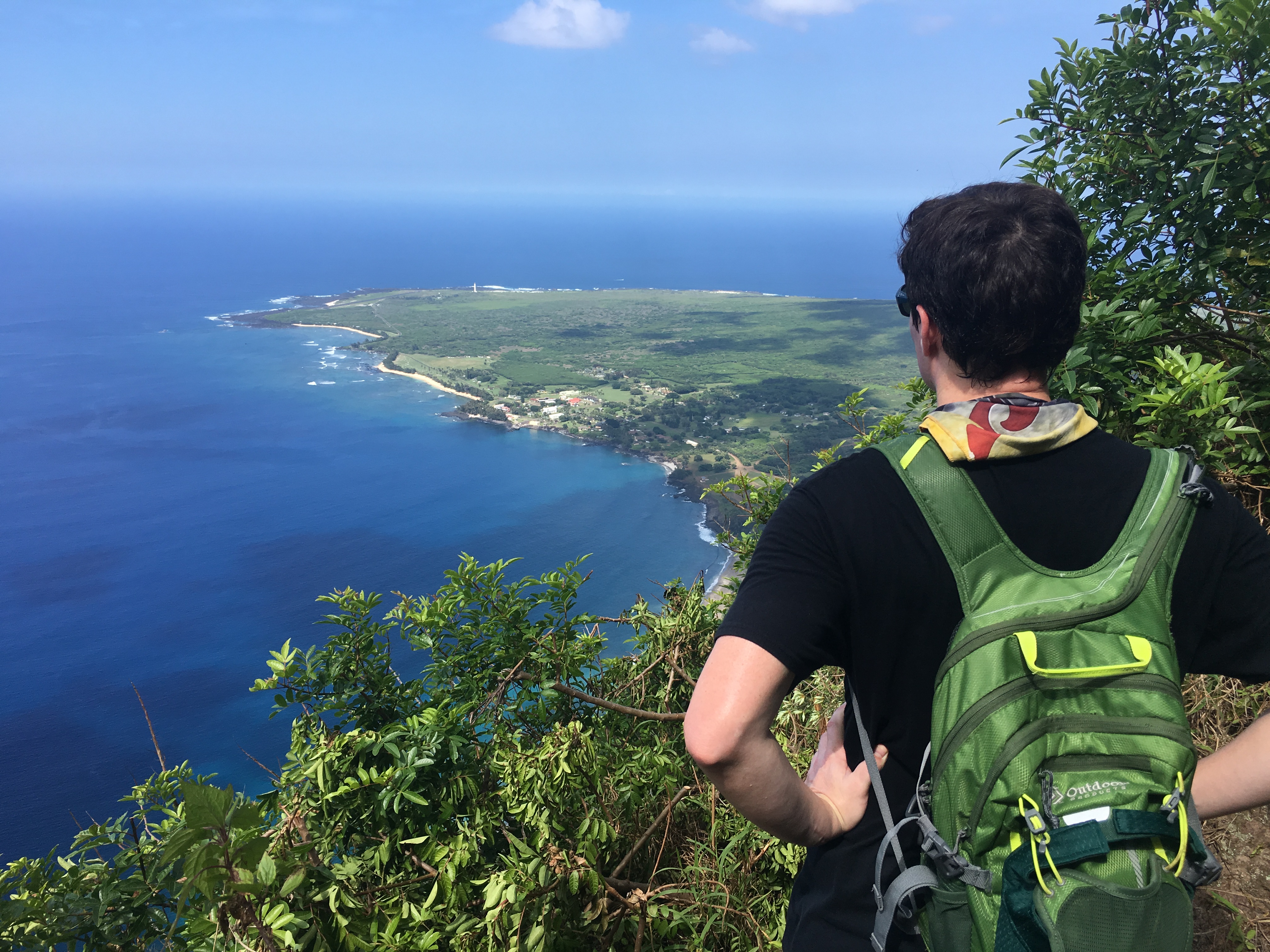“Di – an – na”
As I was paying for our sandwiches, my sister Holly, called my name from the café’s outdoor eating area. Curiously, her voice was faint and she was drawing out each syllable of my name. I thanked the café owners for the perfect hit-the-spot meal then exited the building to answer my sister’s call. I walked outside to find a long line of cows tromping through the narrow village path. What an iconic scene to witness during this lunch stop on the legendary Camino de Santiago. My sister, always one for taking a photo or video of unique aspects of our adventures, was sure to desire a pic of this cow march and alert me so that I could witness the event as well.
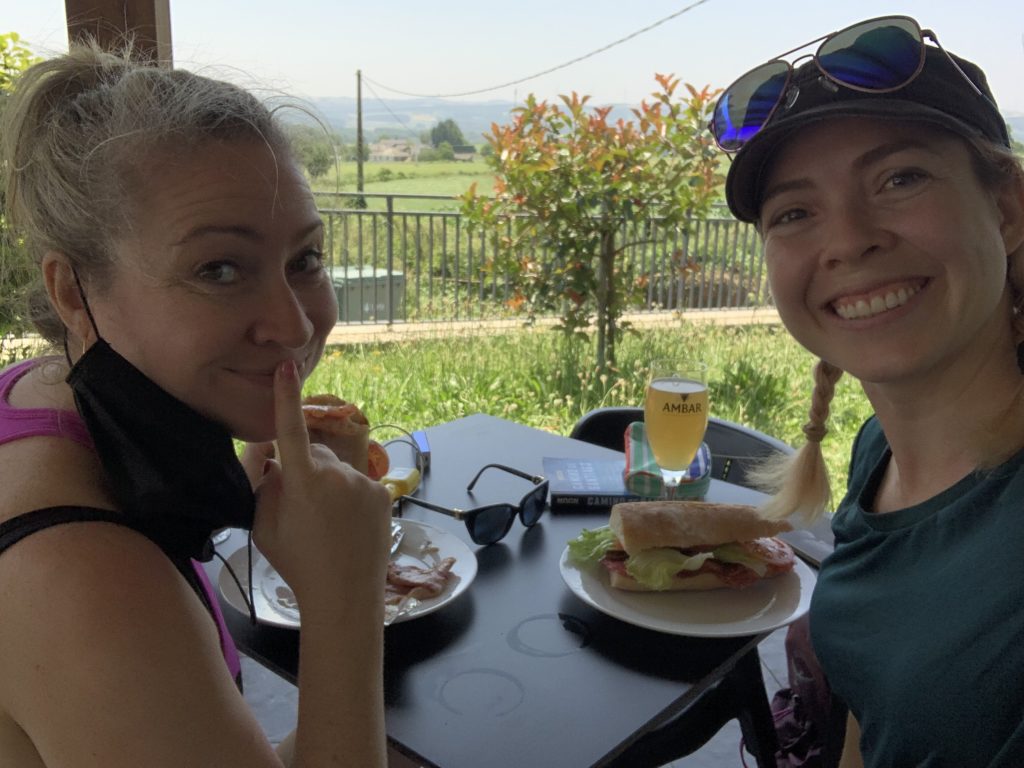
Just two weeks prior, Holly and I decided to hike the Sarria to Santiago de Compostela leg of the Camino de Santiago in the northwest of Spain, a six-day journey by foot. Although we are both travel enthusiasts, neither have walked more than three days in a row and never while carrying our own gear. When deciding how we would spend our week of vacation on the Camino, we opted to take the shortest and reportedly most scenic route to the famed cathedral dedicated to Saint James.
We arrived in Sarria with nervous excitement unsure of the form our adventure might take, especially considering the Covid-19 pandemic and the only recently lifted travel restrictions for Spain.


Our first action item was to obtain our “pilgrim’s passport” – the accordion-esque booklet where journeyers (i.e., pilgrims) of the Camino add a personalized stamp from each establishment visited while on the trek. We were intimidated by the empty pages and wondered how we could possibly fill these pages in just six days. Our egos worried if our booklets would be the same as everyone else’s. I mean, everyone goes to an albergue (a hostel), lunch, a church, and then dinner… it seems all the pilgrims’ passports would end up looking remarkably similar.

Everyone wants a unique experience while traveling. A bit of a special story to tell your friends that veers off the expected narrative of, “we went to this very touristy stop, then that very touristy stop, and it was all beautiful and the food was delicious”… you know the template. But since we decided to go on a long walk in which literally several hundreds of thousands traverse each year, for the past thousand years, we had to acknowledge that we hardly planned an “off-the beaten path” adventure. We had to alter our mindset, setting aside our yearning to have a “distinctive” experience, and comforted ourselves in the narrative that a trip can be unique to us, even if a lot of other people walk the same road.
Waking up on Day 1, we excitedly laced up our hiking boots and walked the 30 meters to breakfast.
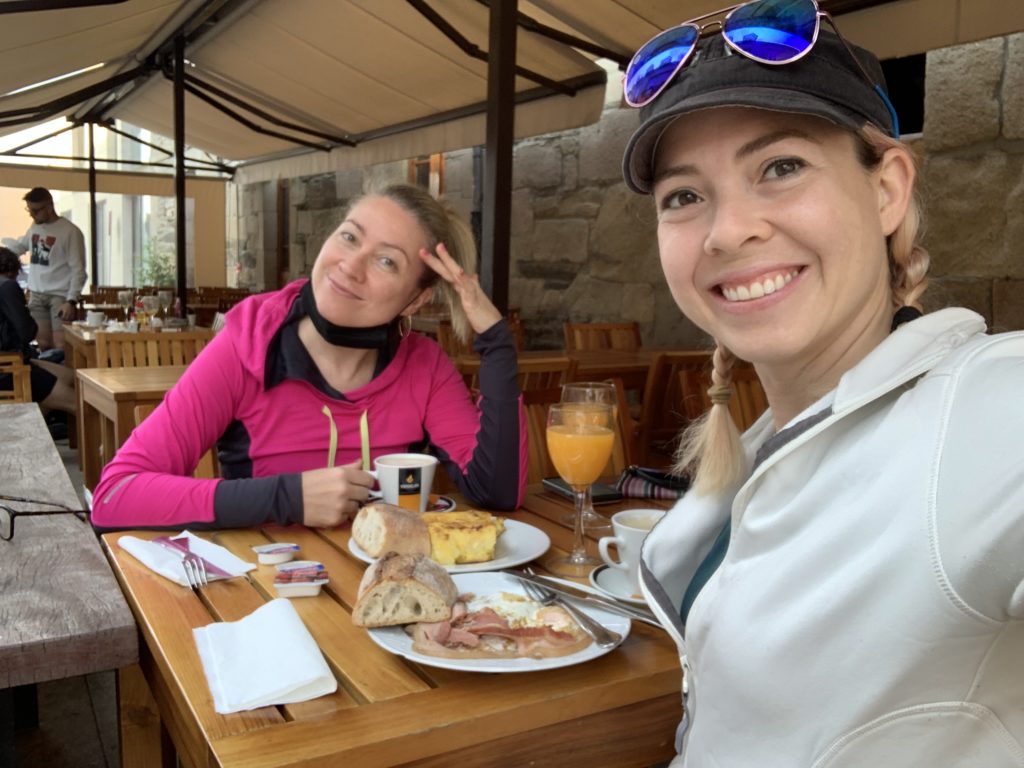
“Usted tengo sello?” Our botched attempt at Spanish moved the waiter to promptly reply “yes” in English, “we have our very own stamp, you can get it at the bar.” And so, we began filling in our passport with the stamp from the most popular breakfast place in town, along with several other pilgrims. Eventually, we set off to hike actually begin walking the path.
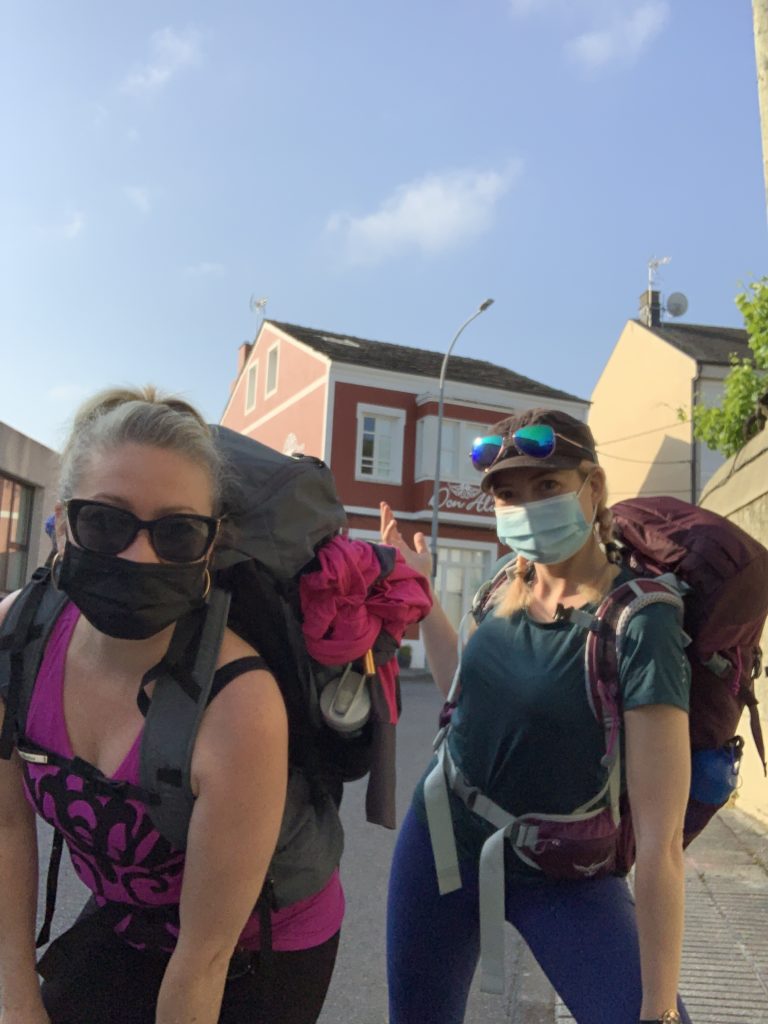


It took us 45 minutes to walk one mile. We took pictures of every old pile of stones we saw, and every signpost boasting the iconic yellow clam shell shape set on a bright blue background. Our cameras were out and ready to document (almost literally) every step of our journey. The first day’s plan was to walk to Portomarín footing about 14 miles. Eventually we emotionally settled down and increased our speed to a casual pace, enjoying the rolling hills and only backtracking once to see the fabled Church of Santiago de Barbadelo. The path was practically void of other travelers at this time (again, pandemic year – June 2021), which provided a calm and peaceful setting. However, minimal tourists equate to minimal cafes, shops, and churches being open. Instead of wondering if we would have the same passport stamps as anyone doing the Camino during these times, we wondered if there would be any food stops even open for us to obtain any stamp at all! We wove through the tiny streets lined with stone-built houses of a town called Brea, marking the halfway point of today’s journey, and were excited to find our first open café, Mirador da Brea. We were the only patrons and chose an outdoor seating area. We ordered our sandwiches and cold beverages and stamped our passports. Again, we noted, this is the only stamp all the other travelers would receive today since it is the only open eatery. But it was perfect, and we enjoyed our meals with smiles on our faces, very pleased with how the hike was turning out.




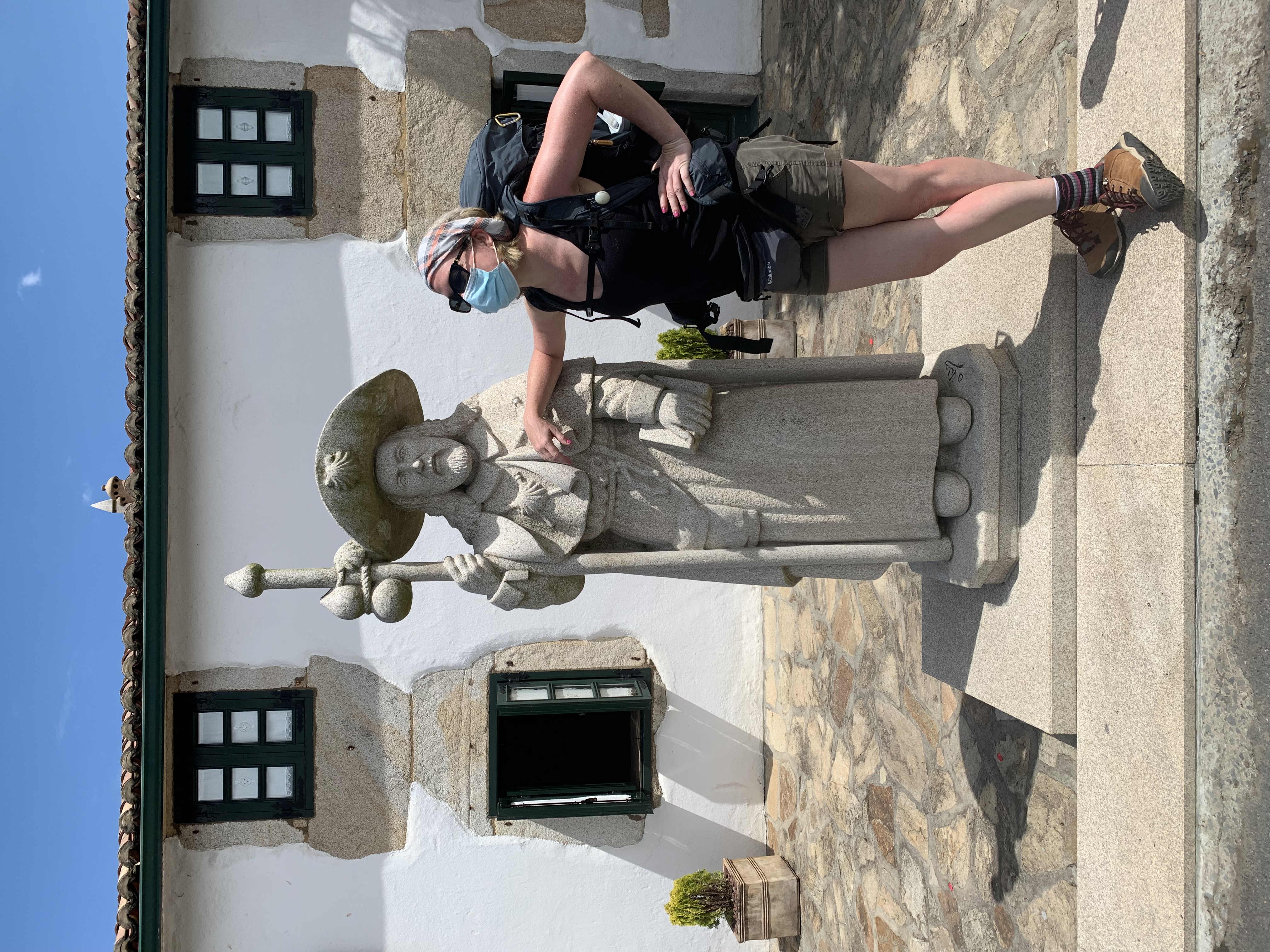
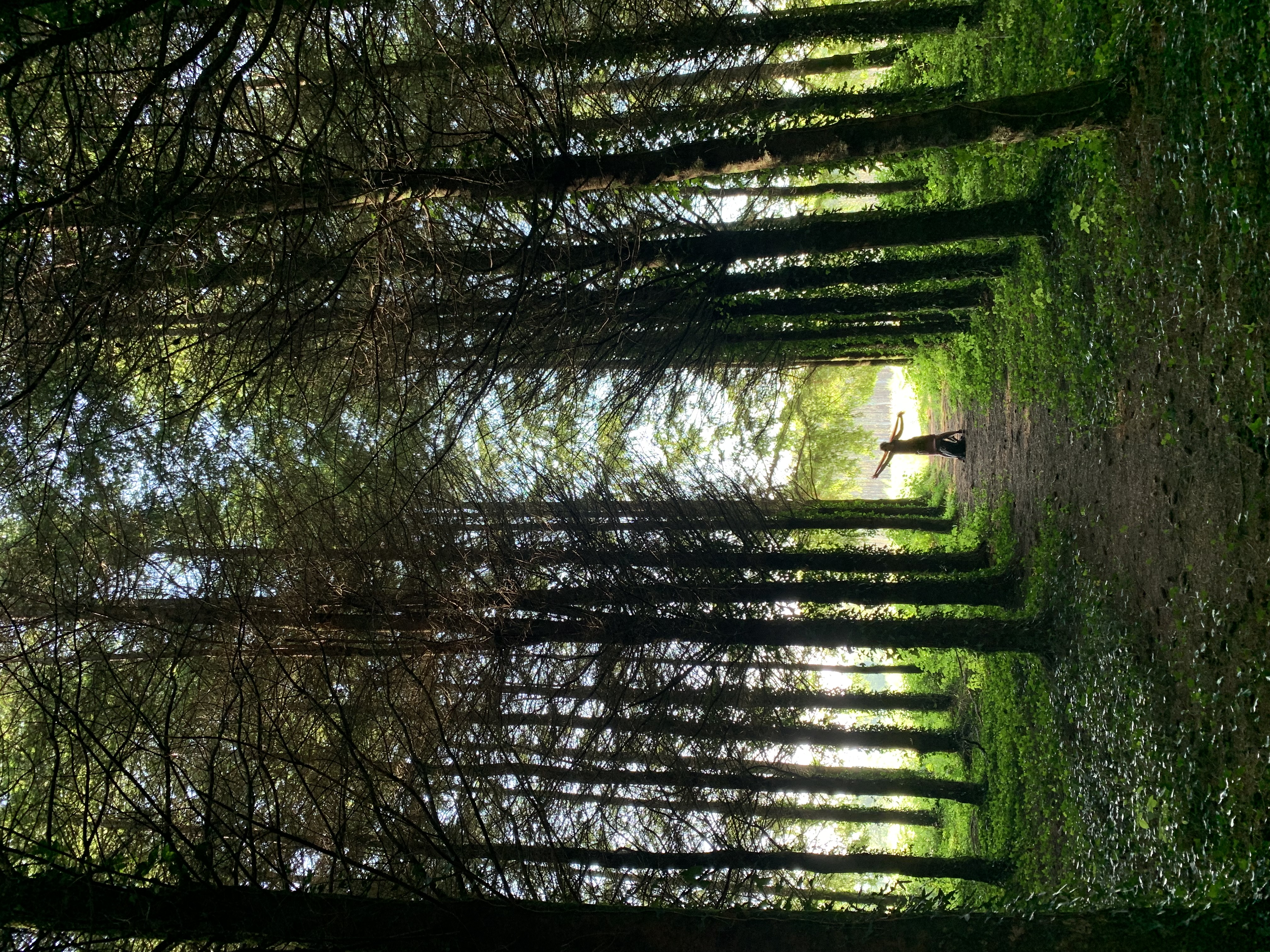
I left to pay the bill before we set out again. The cows came through, my sister called to me, and I exited the building to the fun scene of bovines tromping through streets so narrow, only one cow can squeeze through at a time.
When I looked around further, I didn’t see Holly with her camera pointed at the wide-eyed beasts. My eyes scanned the scene to locate her, and I finally saw her cowered on the ground, her hands gripping her head. She did not look overjoyed about the cow march.
“Di – an – na” she strained again.
As I rushed over with urgency, I saw splatters of blood on the grass surrounding her. Blood was traversing down her face, rolling over her hands.
“I tripped and propelled myself headfirst into that metal fence trying to get a video of those cows,” she gasped, reluctant to release pressure on the wound. I crouched beside her and yelled towards the café for a doctor to be called. Holly gently removed her hands from her head, half expecting the blood-fountain to return, but fortunately the blood-showering event slowed to an ooze. I tried to assess the damage, but the gash was obscured by a swamp of blackish-red matted hair. Assured that the wound had stopped the velocity to which it was emitting blood, I moved Holly to a chair. The concerned café owners had the phone out, ready to call an ambulance at our request. After a few moments of American-induced monetary panic over being indebted to a Spanish hospital for the next 30 years, we acknowledged that medical attention was needed to ensure closure of the wound, and that was a priority, no matter the cost. Our American minds were blown, (that’s twice in one day for my sister) when we were informed that the ambulance ride and hospital care was free and calling a cab would be more expensive.



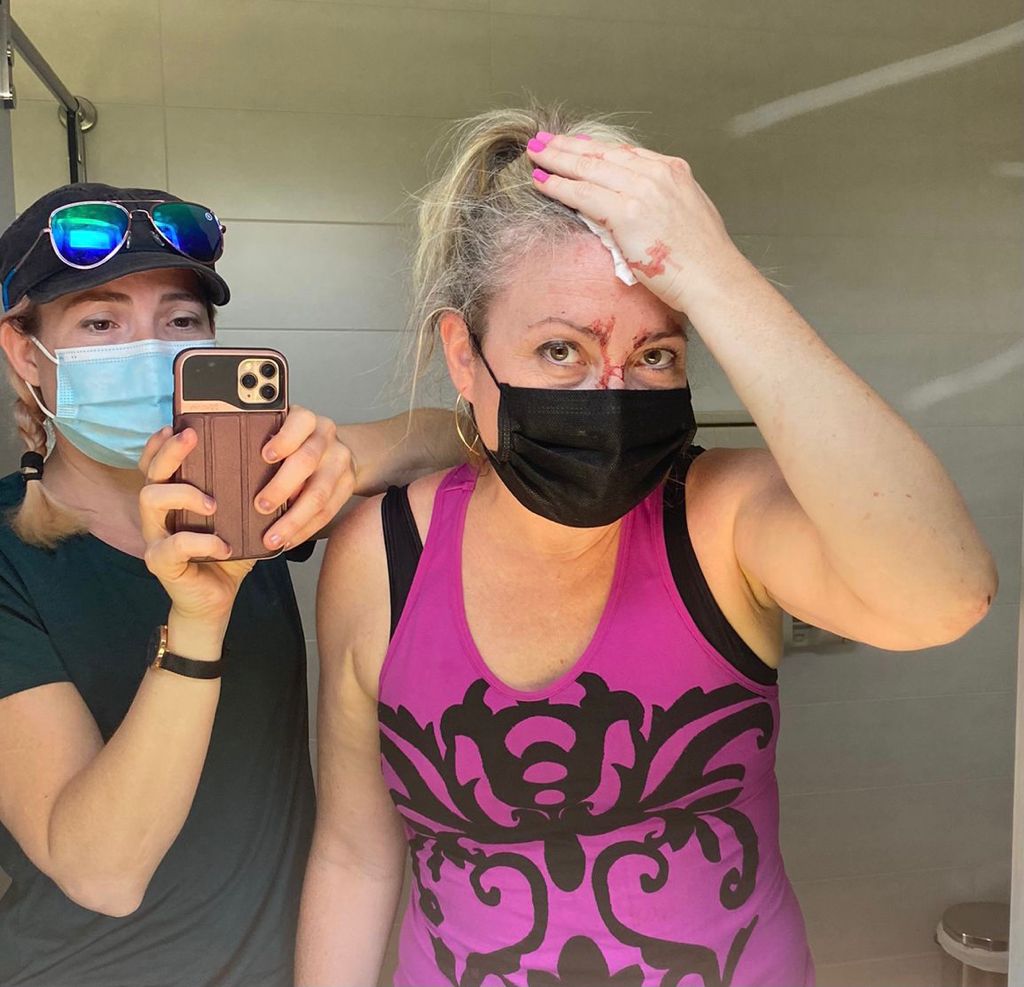

The ambulance arrived and emergency medical professionals, assessing my sister’s injury, put our minds at ease. Feeling assured of her survival, we lightened up and relaxed into the moment. During the ambulance ride, we laughed at the absurdity of hiking for three hours donning heavy backpacks only to return to the start of our journey in 30 minutes by vehicle.
Upon arrival at the hospital in Sarria, Holly was grateful for the excellent (and free) care she received and overjoyed by the virtual painlessness of being on the receiving end of five staples to her head. To our mutual surprise, she was cleared to continue on with the Camino hike.


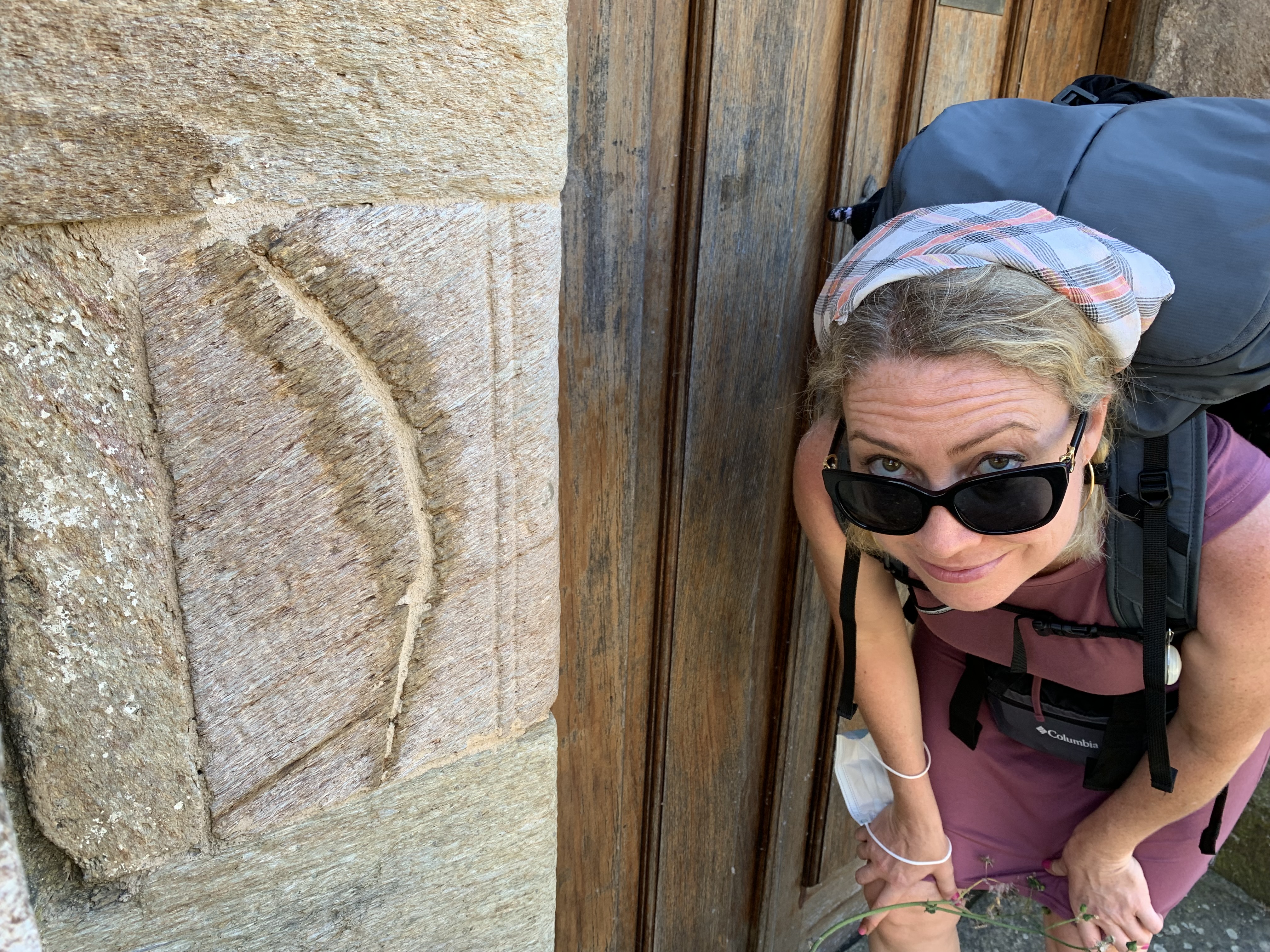
After five days without further medical incidents, we ambled into the famed Santiago de Compostela. Like all the other pilgrims, we parked our gear along the wall and posed with exhausted grins on our faces in front of the Cathedral of Saint James. Unlike all the other pilgrims, we did so with five medical staples protruding from my sisters head.
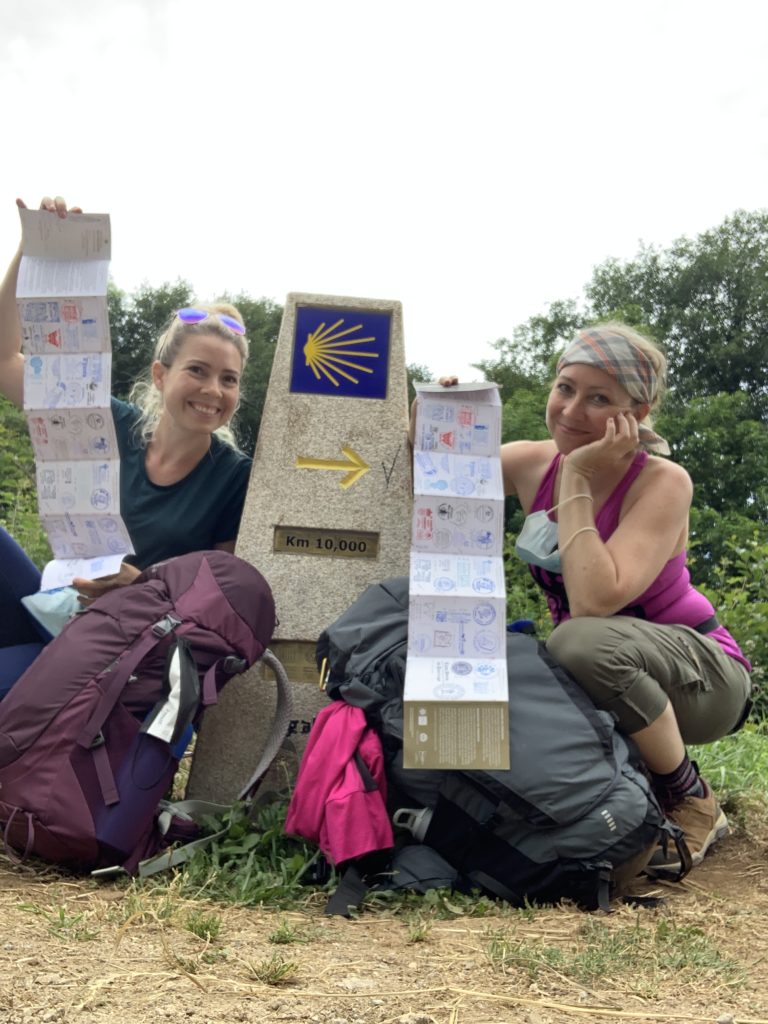
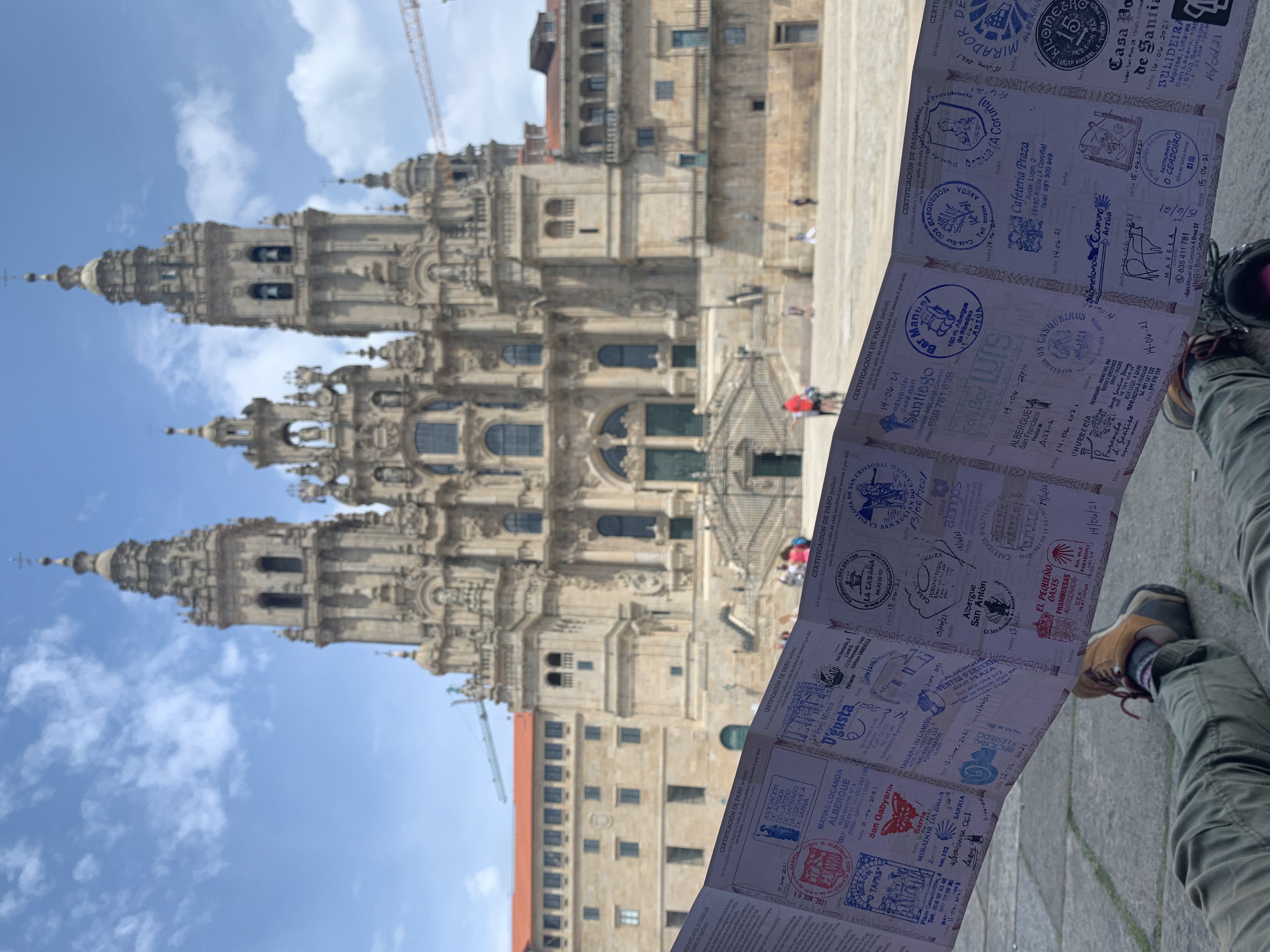

We’ve all been warned to be specific in what you wish for. We came into this trip yearning for an experience different from that of our peers, one that would have a slightly different genetic makeup from the rest. A head injury was not how we hoped we would obtain the unique-status, but it was a memorable way.
Whenever we want to relive our time on the camino, we need only to open our ink-filled pilgrim’s passport booklets and locate the personalized stamp we received from the ambulance emergency responder, who humored our request for her to “stamp” our passports with her signature and doodle of an ambulance, making our “credentials” undoubtedly unlike all others.



